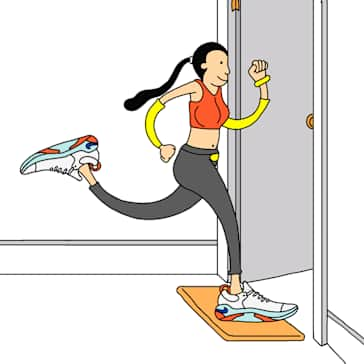Running Course

Running Course
How to Start Running
If it were as easy as slipping on your shoes and rolling out the front door, you wouldn’t be reading this. Listen: we know that if you’re someone who has never run, or you’ve fallen out of a routine, lacing up for a first run can feel overwhelming.
But it doesn’t need to be that way, says Nike Running Global Head Coach Chris Bennett. “The hardest part is not finishing the first run, it's starting the first run. Once you accept that, everything gets easier.”
Coach Bennett is all about dropping the running wisdom, and we’re here for it. Here’s a list of things—practical and mental—to help you prep for your first run.
- Don’t overthink it. Just go
- Don’t stress your pace
- Stop before you need to
- Prevent injury with stretching
- Stay on track with a training plan
- Get the right gear
This is a modal window.
“
The first run has nothing to do with pace, nothing to do with distance, nothing to do with duration. It’s about starting it and ending it and wanting to do a next run.
Chris Bennett
Nike Running Global Head Coach
Get an extra push with a guided run
The Nike Run Club’s guided runs take you alongside Nike coaches, athletes, and special guests who encourage you every step of the way.
Prevent injury with stretching
Stretch while moving before your run …
Aim to do a few minutes of stretching with movement (a.k.a. dynamic stretching) before your run. Why this kind specifically? It mimics the full range of motion of a run, which helps you get looser, faster. If you’re still feeling tight during your run, it’s ok to stop and stretch some more. No guilt! That helps you to finish feeling great.
…and finish up with still stretches
Fact: Doing dynamic and static stretches (ones you hold) post-run helps prevent injury and improve flexibility. “Those few minutes are so important,” says Coach. “They’ll make your next run better, I promise.” Need some tips on the best stretching routines for runners? The Nike Training Club app has you covered.
Prevent injury with stretching
Stretch while moving before your run …
Aim to do a few minutes of stretching with movement (a.k.a. dynamic stretching) before your run. Why this kind specifically? It mimics the full range of motion of a run, which helps you get looser, faster. If you’re still feeling tight during your run, it’s ok to stop and stretch some more. No guilt! That helps you to finish feeling great.
…and finish up with still stretches
Fact: Doing dynamic and static stretches (ones you hold) post-run helps prevent injury and improve flexibility. “Those few minutes are so important,” says Coach. “They’ll make your next run better, I promise.” Need some tips on the best stretching routines for runners? The Nike Training Club app has you covered.
Stay on track with a training plan
Set a goal
The easiest way to get moving on a consistent basis is to work toward a goal. And we’ve got one for whatever feels right for you. Just want to get into a rhythm? Try our First 10 plan. From there you can work toward a 5K, 10K, and beyond.
First 10 Plan
Slowly build your endurance and distance through speed runs, long runs, and uphill climbs. Complete these 10 workouts and you’ll be stronger and fitter than you were when you started. You might even start calling yourself a runner. Explore Plan
5K Plan
This 3.1-mile target is a great way to see if you even like training for a race. An 8-week plan that involves speed work and a maximum 5-mile run is totally doable, even for new runners. Explore Plan
10K Plan
You’ll learn a lot of running terminology as you train for this 6.2-mile distance, like the difference between your tempo pace, 5K pace, and 10K pace (tempo is the fastest one, 10K is the slowest). And you’ll build endurance through interval training and distance runs as long as 7 miles. Explore Plan
Get the right gear
Find the right shoe for your run
Not all running shoes are created equal. Some are made for long runs, some for speed, some for comfort. Our Running Footwear Guide helps you match your goals with the right pair. Footwear Guide
Clothes that make it easier
You can run in almost anything, but things like a supportive sports bra, socks that breathe, and shorts that don’t chafe—they can also keep you focused. We’ve got the basics for whatever you need.
Clothes that make it easier
You can run in almost anything, but things like a supportive sports bra, socks that breathe, and shorts that don’t chafe—they can also keep you focused. We’ve got the basics for whatever you need.





